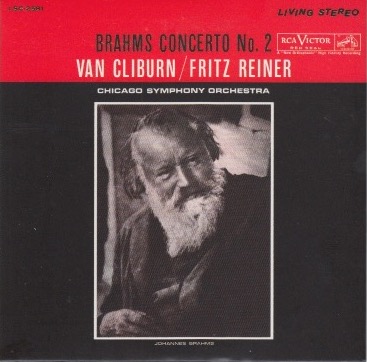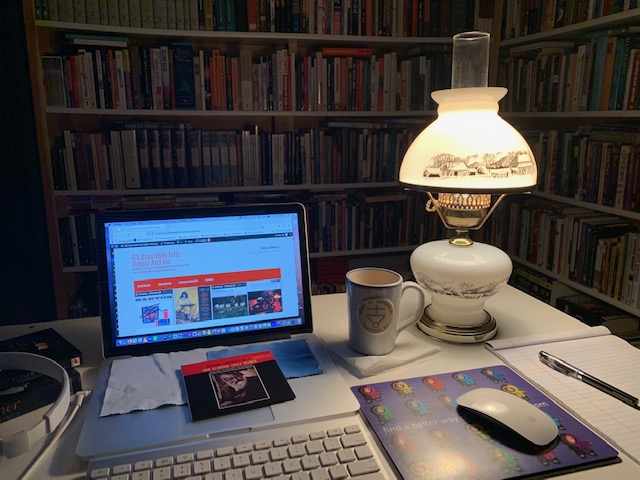
What a difference a day makes.
Yesterday, Van Cliburn and the CSO hit it out of the park with Beethoven’s “Emperor” Concerto.
Today, the team’s bus got lost on the way to the stadium.
And not because they weren’t all suited up and ready to play, either. And not because the lacked an adequate map. In fact, they were using Google maps. GPS would have taken them right to the back entrance.
No. It’s because the driver of the bus was Johannes Brahms.
And he was asleep at the wheel.
I don’t know what it is about Brahms. I get that he was one of the “Three Bs” consisting of Bach, Beethoven, and Brahms.
Aside from all of their surnames starting with a B, the only grouping I can see for those three composers, still keeping with the Three Bs concept, would be BBb. He’s a lesser “B,” to me.
B that as it may (see what I did there?), this music leaves me colder than a January morning in Escanaba.
Not even the fleet fingers of Van Cliburn, nor the warm and fuzzy personality of Maestro Reiner (you see what I did there?), nor the considerable talents of the Chicago Symphony Orchestra could pull a Dr. Frankenstein and give me a reason to exclaim, “It’s alive!”
But I’m getting ahead of myself. That belongs in the Subjective Stuff section of my blog posts.
First, let’s cover…
The Objective Stuff
If you want to read about Johannes Brahms, visit his entry on Wikipedia.
Johannes Brahms (1833-1897) was a German composer, pianist, and conductor of the Romantic period. Born in Hamburg into a Lutheran family, he spent much of his professional life in Vienna. He is sometimes grouped with Johann Sebastian Bach and Ludwig van Beethoven as one of the “Three Bs” of music, a comment originally made by the nineteenth-century conductor Hans von Bülow.
Brahms composed for symphony orchestra, chamber ensembles, piano, organ, voice, and chorus. A virtuoso pianist, he premiered many of his own works. He worked with leading performers of his time, including the pianist Clara Schumann and the violinist Joseph Joachim (the three were close friends). Many of his works have become staples of the modern concert repertoire.
Brahms has been considered both a traditionalist and an innovator, by his contemporaries and by later writers. His music is rooted in the structures and compositional techniques of the Classical masters. While some contemporaries found his music to be overly academic, his contribution and craftsmanship were admired by subsequent figures as diverse as Arnold Schoenberg and Edward Elgar. The diligent, highly constructed nature of Brahms’s works was a starting point and an inspiration for a generation of composers. Embedded within those structures are deeply romantic motifs.
If you want to read about Van Cliburn, visit his entry on Wikipedia.
Harvey Lavan “Van” Cliburn Jr. (1934-2013) was an American pianist who, at the age of 23, achieved worldwide recognition when he won the inaugural International Tchaikovsky Competition in Moscow in 1958 (during the Cold War). Cliburn’s mother, a piano teacher and an accomplished pianist in her own right, discovered him playing at age three, mimicking one of her students and arranged for him to start taking lessons. Cliburn developed a rich, round tone and a singing-voice-like phrasing, having been taught from the start to sing each piece.
Cliburn toured domestically and overseas. He played for royalty, heads of state, and every US president from Harry S. Truman to Barack Obama
If you want to read about Brahms Concerto No. 2, visit its entry on Wikipedia,
The Piano Concerto No. 2 in B♭ major, Op. 83, by Johannes Brahms is separated by a gap of 22 years from his first piano concerto. Brahms began work on the piece in 1878 and completed it in 1881 while in Pressbaum near Vienna. It took him three years to work on this concerto which indicates that he was always self-critical. He wrote to Clara Schumann: “I want to tell you that I have written a very small piano concerto with a very small and pretty scherzo.” Ironically, he was describing a huge piece. This concerto is dedicated to his teacher, Eduard Marxsen. The public premiere of the concerto was given in Budapest on 9 November 1881, with Brahms as soloist and the Budapest Philharmonic Orchestra, and was an immediate success. He proceeded to perform the piece in many cities across Europe.

Brahms was between 45 and 48 when he composed this piece of music. It was recorded over a period of four days in 1961, from May 9 through May 12. (That’s interesting to note, too. It seems each movement of the four was recorded on a different day. I wonder why?) Maestro Reiner was in his 73rd year of life. Van Cliburn was 27. It was recorded in Orchestra Hall, Chicago.
The Subjective Stuff
Recording quality: 4
Overall musicianship: 4
CD booklet notes: 2
CD “album cover” information: 3 (not much there, but what is there is interesting)
How does this make me feel: 2
So, here I sit in my library, sipping a Dutch Breakfast Blend coffee (with a hint of chocolate), six minutes before the sun has risen (which is at 6:34am), listening to music that doesn’t particularly move me.
It’s a struggle, I can tell you.
But somebody’s gotta do it.
Some of Brahms has a melodic, beautiful sound to me.
But most of it sounds either sleepy or needlessly melodramatic.
Guess which category today’s CD falls into for me?
I’d need a lot more coffee – Irish coffee, at that – to make this palatable to me.
